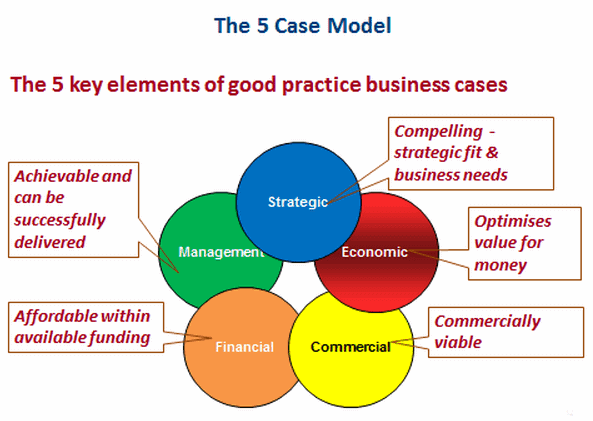Have you ever discussed a great business idea with your team? Were you excited to get things moving? But did the meeting end with the inevitable phrase, ‘Well – we’re going to need a pretty convincing business case’?
If so, did you feel a sense of anxiety and uncertainty; possibly asking ‘How do I make it convincing?’ Or ‘How can I avoid a never-ending game of business tennis?’ (You know – you make a ballsy proposal only to have it continually returned!).
Whether the idea is for greater business agility, digital transformation, realising a new service or supporting curiosity within a work-team, you’ll need to make a convincing case! A smart way to go could be to adapt the Better Business Cases model to suit your organisation.

Five tips:
So let’s pick up on five quick learning points from the HM Treasury Better Business Cases approach;
- Strategic – Be Compelling – Make a Case of Need – explain what’s needed to achieve the goal, what is available at present and the gap to be scaled. This step defines proposal boundaries.
- Economic – Be Relevant –Significant Improvement-showing who benefits and how they would assess the service options. Be innovative and imaginative; get the right people involved, identify what matters most, and quantify their interest in the alternatives.
- Commercial – Be Pragmatic – confirm who can deliver the service or solution; what it would cost and risks to delivery – the project management classics: On-Time, On-Cost, On-Quality; Full Scope and Benefits. Confirm robust Procurement and Contractual procedures.
- Financial – Be Prudent– clarify what is affordable to the organisation – in financial terms – over the whole lifetime of the new service or solution. Use a comparative approach for return on investment.
- Management – Be Convincing – plan the implementation of the scheme; illustrate how stakeholders will be kept informed. Use graphics and video models where possible.

For most people, just 20 hours of study into Business Cases – will make a huge difference to outcome!
Each of these points should be presented crisply, after exploring what’s needed, possible and available to decision-makers; it is critical to show how the preferred way forward, to scale a service gap, is reflected in the chosen service improvement or solution.
The Risks of choosing the wrong option are greatly reduced by adopting an evolutionary approach, from high level to detail, to option appraisal and project implementation – and communicating the future benefits; well as a focus on costs, and milestone delivery when developing reporting arrangements for user representatives.
So that’s all there is to it! Just find a good guide (and possibly a good facilitator or trainer) and you are sure to hit a home run! Having used and taught Better Business Cases, over many years, I can say BBC provides a great framework for working through competing ideas. It’s also scalable, from relatively simple to complex cases. It’s certainly a great help to individual or network organisations – especially when meeting disparate User and Customer needs.
Good Practice:
BBC has recently been recognised as good practice by the World Bank, to present a clear way forwards. So, tailor it to your situation, and give it go! You can raise your confidence with the APMG Foundation and Practitioner level examinations; that way, the whole organisation benefits by bringing great business ideas to life!
Find out more at: https://www.cupeinternational.com/training-courses/bbc-training-courses/

